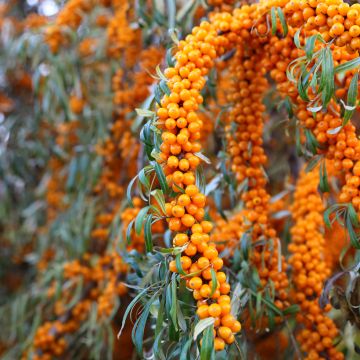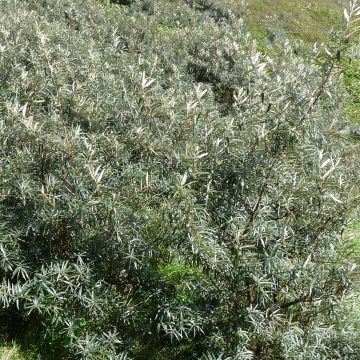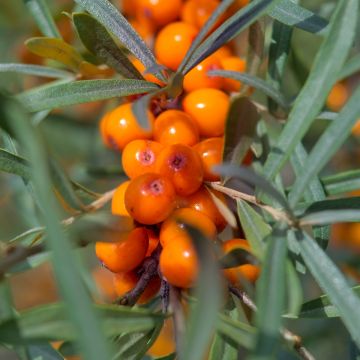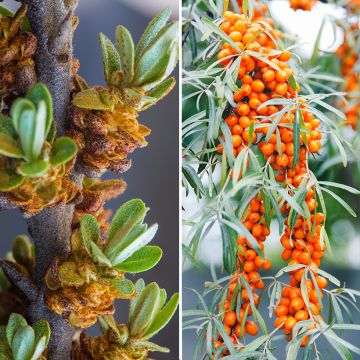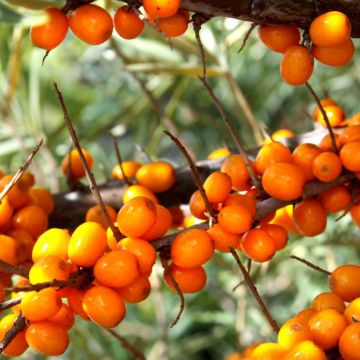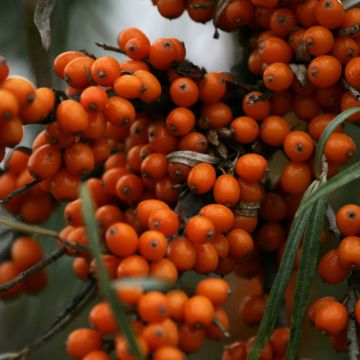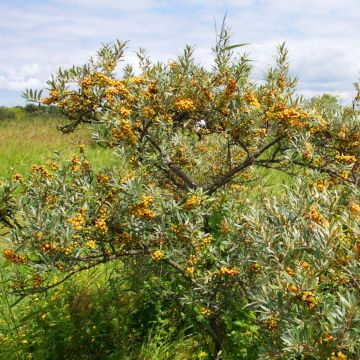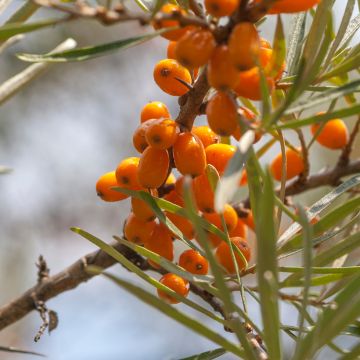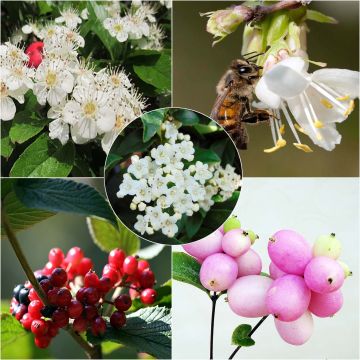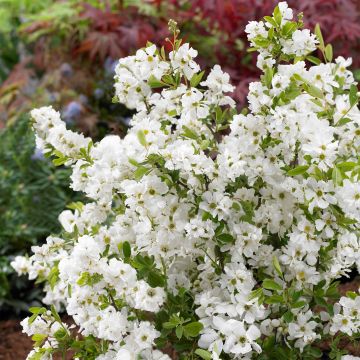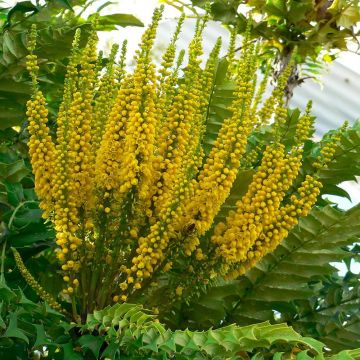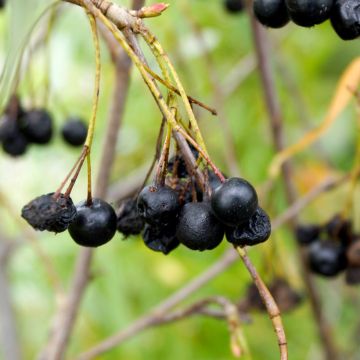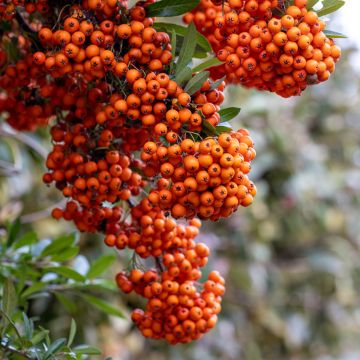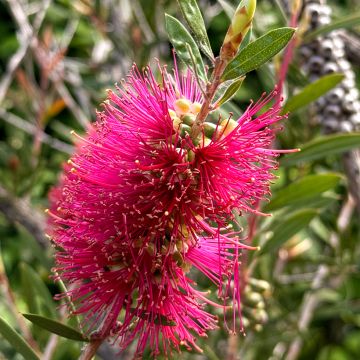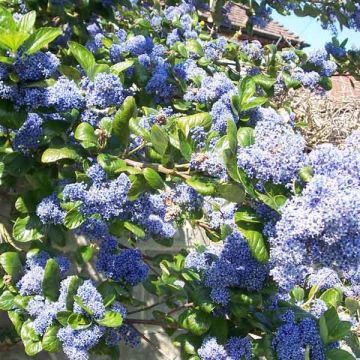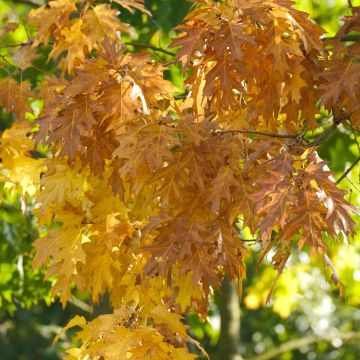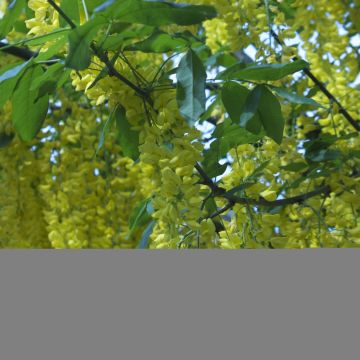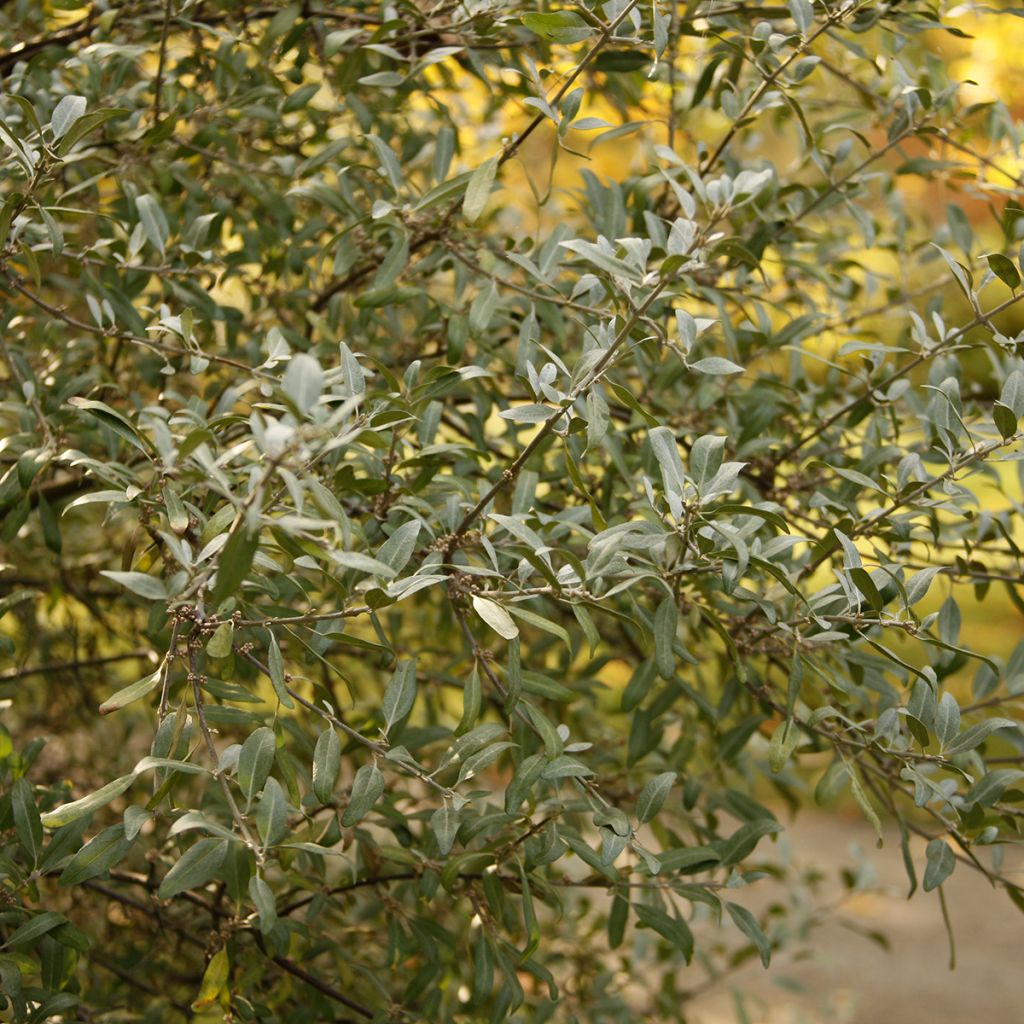

Shepherdia argentea
Shepherdia argentea
Shepherdia argentea
Silver Buffaloberry, Bullberry
This plant carries a 24 months recovery warranty
More information
We guarantee the quality of our plants for a full growing cycle, and will replace at our expense any plant that fails to recover under normal climatic and planting conditions.
From €5.90 for pickup delivery and €6.90 for home delivery
Express home delivery from €8.90.
Does this plant fit my garden?
Set up your Plantfit profile →
Description
Shepherdia argentea, or silver buffaloberry, similar to sea buckthorn, is an excellent deciduous bush for informal or defensive hedges, ideal in a garden that leaves room for nature. Fast-growing, dense, and thorny, it forms a beautiful mass of soft green-grey that shimmers with silver reflections in the wind. Female plants are particularly decorative in summer with their red fruit reminiscent of currants. These berries are edible and can be transformed into jellies or jams. They are also a delight for some birds. Extremely resistant and undemanding, the silver buffaloberry adapts to all climates, even in coastal areas. It only requires a very sunny exposure. To obtain fruit, the presence of a nearby male pollinating plant is essential.
Shepherdia argentea belongs to the Elaeagnaceae family, the most well-known representative of which is Elaeagnus. It is a botanical species native to North America, found from Canada to Texas. In the wild, it is found in meadows, always in the sun, on different types of well-drained soil. Although not a legume, nodules carrying nitrogen-fixing bacteria develop on its roots, allowing it to thrive in difficult environments. The silver buffaloberry forms a bush about 3 metres in all directions, with a bushy and well-branched habit. Its branches are flexible and very thorny, covered with silver scales when young. The foliage is deciduous, developing in spring and turning yellow in autumn before falling. The leaves are oblong and lanceolate, opposite on the branches, measuring 2 to 6 cm in length. They are green-grey on the upper side and covered with a silver fur on the underside. Flowering occurs from March to May depending on the climate, on bare branches, before the leaves appear. The tiny but numerous female flowers, are yellowish-green, bell-shaped and have no petals. After pollination by a male plant, the flowers transform into small ovoid berries measuring less than 1 cm. They ripen between July and September depending on the climate. Their vermilion red colour is perfectly highlighted by the silver foliage. These fruits are edible but have a sour and bitter taste.
Highly decorative in winter thanks to its fruiting, this relative of the Sea Buckthorn can be used in the garden in the same way. The Silver Buffaloberry is perfect for a vibrant hedge in a naturalistic garden, with other nectar-rich species that are beneficial to bees and birds. It naturally pairs well with the Russian olive and sea buckthorns, which have the same cultivation requirements. The Cornelian cherry (Cornus mas), with its early yellow flowering and beautiful autumn colours, also produces small edible fruits. Being nectar-rich, it is also a particularly useful plant for bees, making it ideal in a hedgerow. Amelanchier is also a good companion with its magnificent white spring blossoms, followed by decorative and edible berries. In a dry Mediterranean garden, it can be paired with the azarole hawthorn or pomegranate.
Report an error about the product description
Plant habit
Flowering
Foliage
Botanical data
Shepherdia
argentea
Elaeagnaceae
Silver Buffaloberry, Bullberry
North America
Other Hippophae
Planting and care
Shepherdia argentea is best planted in autumn or, failing that, early spring. Choose a sunny location. The bush can adapt to all types of well-drained soils that are not waterlogged in winter. It tolerates clay, limestone, rocks, sand... and can withstand salty soils. Soak the root ball in water for fifteen minutes before planting. Dig a wide and deep hole. Place the top of the root ball level with the ground and fill in with soil. Water at the time of planting. After that, if you plant in autumn and it rains from time to time, watering will not be necessary. It is a bit sensitive to summer drought in its early years, but becomes very drought-tolerant once deeply rooted.
Hardy, not very susceptible to diseases and pests, shepherdia does not require any special care.
Planting period
Intended location
Care
This item has not been reviewed yet - be the first to leave a review about it.
Hedge shrubs
Haven't found what you were looking for?
Hardiness is the lowest winter temperature a plant can endure without suffering serious damage or even dying. However, hardiness is affected by location (a sheltered area, such as a patio), protection (winter cover) and soil type (hardiness is improved by well-drained soil).

Photo Sharing Terms & Conditions
In order to encourage gardeners to interact and share their experiences, Promesse de fleurs offers various media enabling content to be uploaded onto its Site - in particular via the ‘Photo sharing’ module.
The User agrees to refrain from:
- Posting any content that is illegal, prejudicial, insulting, racist, inciteful to hatred, revisionist, contrary to public decency, that infringes on privacy or on the privacy rights of third parties, in particular the publicity rights of persons and goods, intellectual property rights, or the right to privacy.
- Submitting content on behalf of a third party;
- Impersonate the identity of a third party and/or publish any personal information about a third party;
In general, the User undertakes to refrain from any unethical behaviour.
All Content (in particular text, comments, files, images, photos, videos, creative works, etc.), which may be subject to property or intellectual property rights, image or other private rights, shall remain the property of the User, subject to the limited rights granted by the terms of the licence granted by Promesse de fleurs as stated below. Users are at liberty to publish or not to publish such Content on the Site, notably via the ‘Photo Sharing’ facility, and accept that this Content shall be made public and freely accessible, notably on the Internet.
Users further acknowledge, undertake to have ,and guarantee that they hold all necessary rights and permissions to publish such material on the Site, in particular with regard to the legislation in force pertaining to any privacy, property, intellectual property, image, or contractual rights, or rights of any other nature. By publishing such Content on the Site, Users acknowledge accepting full liability as publishers of the Content within the meaning of the law, and grant Promesse de fleurs, free of charge, an inclusive, worldwide licence for the said Content for the entire duration of its publication, including all reproduction, representation, up/downloading, displaying, performing, transmission, and storage rights.
Users also grant permission for their name to be linked to the Content and accept that this link may not always be made available.
By engaging in posting material, Users consent to their Content becoming automatically accessible on the Internet, in particular on other sites and/or blogs and/or web pages of the Promesse de fleurs site, including in particular social pages and the Promesse de fleurs catalogue.
Users may secure the removal of entrusted content free of charge by issuing a simple request via our contact form.
The flowering period indicated on our website applies to countries and regions located in USDA zone 8 (France, the United Kingdom, Ireland, the Netherlands, etc.)
It will vary according to where you live:
- In zones 9 to 10 (Italy, Spain, Greece, etc.), flowering will occur about 2 to 4 weeks earlier.
- In zones 6 to 7 (Germany, Poland, Slovenia, and lower mountainous regions), flowering will be delayed by 2 to 3 weeks.
- In zone 5 (Central Europe, Scandinavia), blooming will be delayed by 3 to 5 weeks.
In temperate climates, pruning of spring-flowering shrubs (forsythia, spireas, etc.) should be done just after flowering.
Pruning of summer-flowering shrubs (Indian Lilac, Perovskia, etc.) can be done in winter or spring.
In cold regions as well as with frost-sensitive plants, avoid pruning too early when severe frosts may still occur.
The planting period indicated on our website applies to countries and regions located in USDA zone 8 (France, United Kingdom, Ireland, Netherlands).
It will vary according to where you live:
- In Mediterranean zones (Marseille, Madrid, Milan, etc.), autumn and winter are the best planting periods.
- In continental zones (Strasbourg, Munich, Vienna, etc.), delay planting by 2 to 3 weeks in spring and bring it forward by 2 to 4 weeks in autumn.
- In mountainous regions (the Alps, Pyrenees, Carpathians, etc.), it is best to plant in late spring (May-June) or late summer (August-September).
The harvesting period indicated on our website applies to countries and regions in USDA zone 8 (France, England, Ireland, the Netherlands).
In colder areas (Scandinavia, Poland, Austria...) fruit and vegetable harvests are likely to be delayed by 3-4 weeks.
In warmer areas (Italy, Spain, Greece, etc.), harvesting will probably take place earlier, depending on weather conditions.
The sowing periods indicated on our website apply to countries and regions within USDA Zone 8 (France, UK, Ireland, Netherlands).
In colder areas (Scandinavia, Poland, Austria...), delay any outdoor sowing by 3-4 weeks, or sow under glass.
In warmer climes (Italy, Spain, Greece, etc.), bring outdoor sowing forward by a few weeks.

































